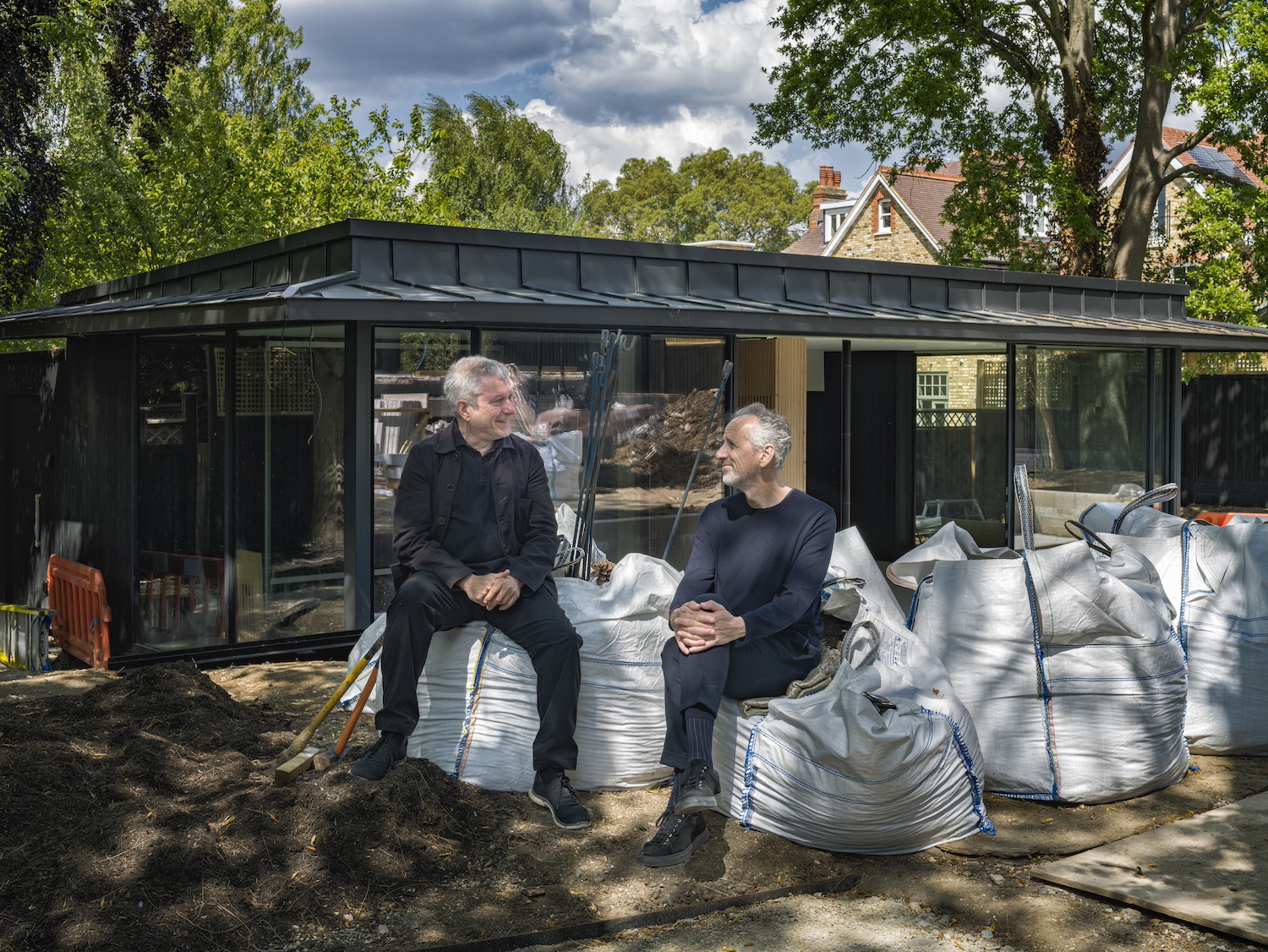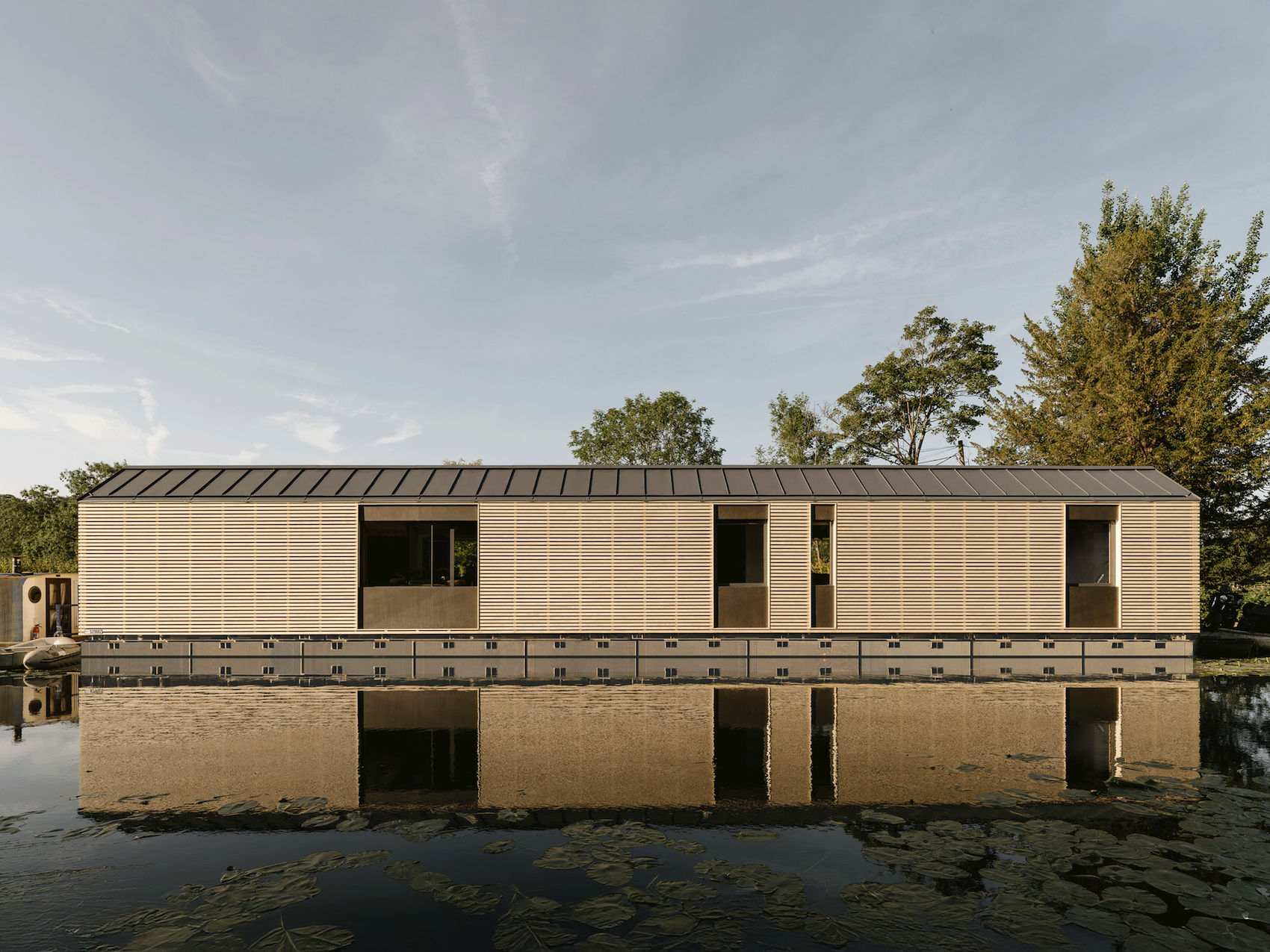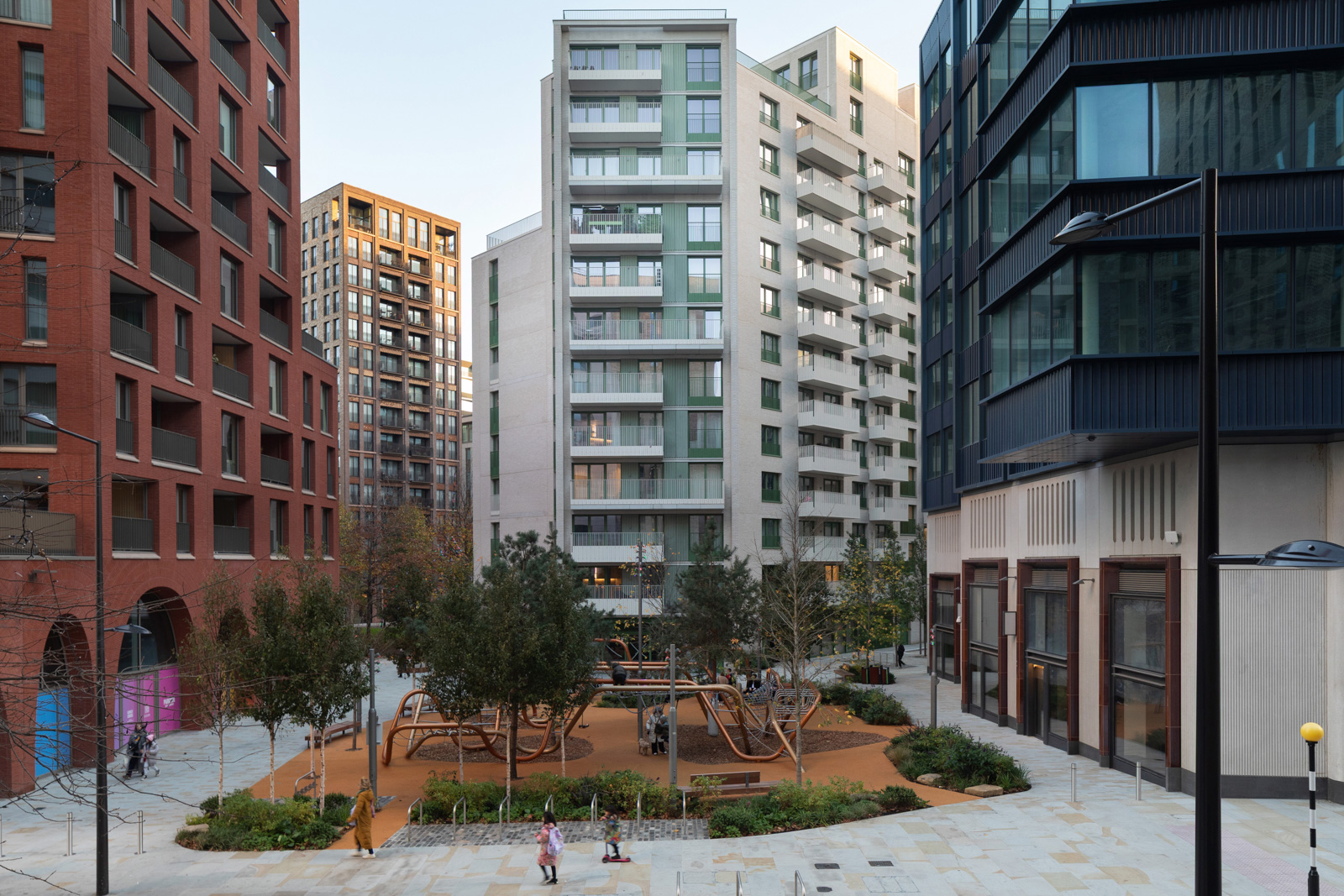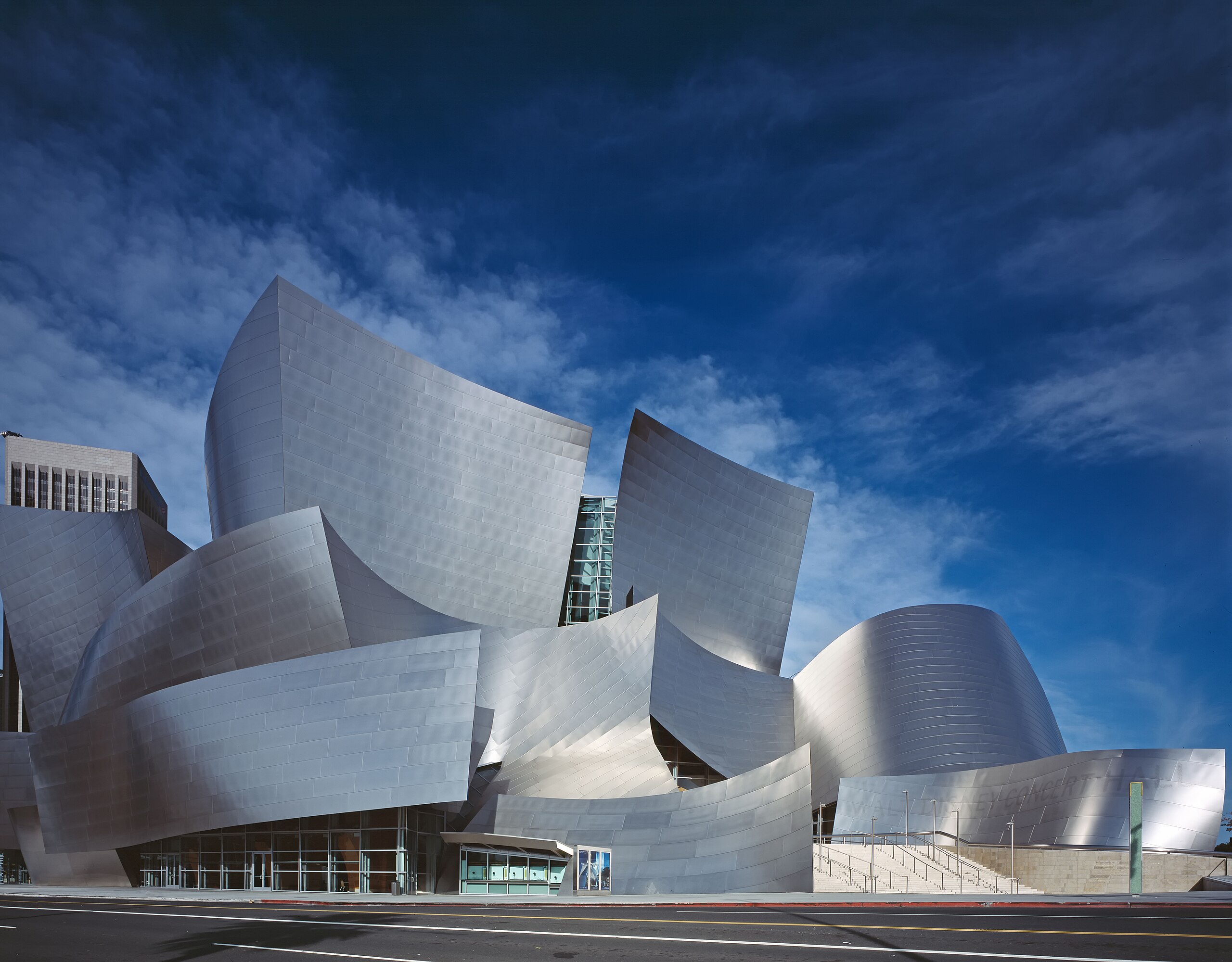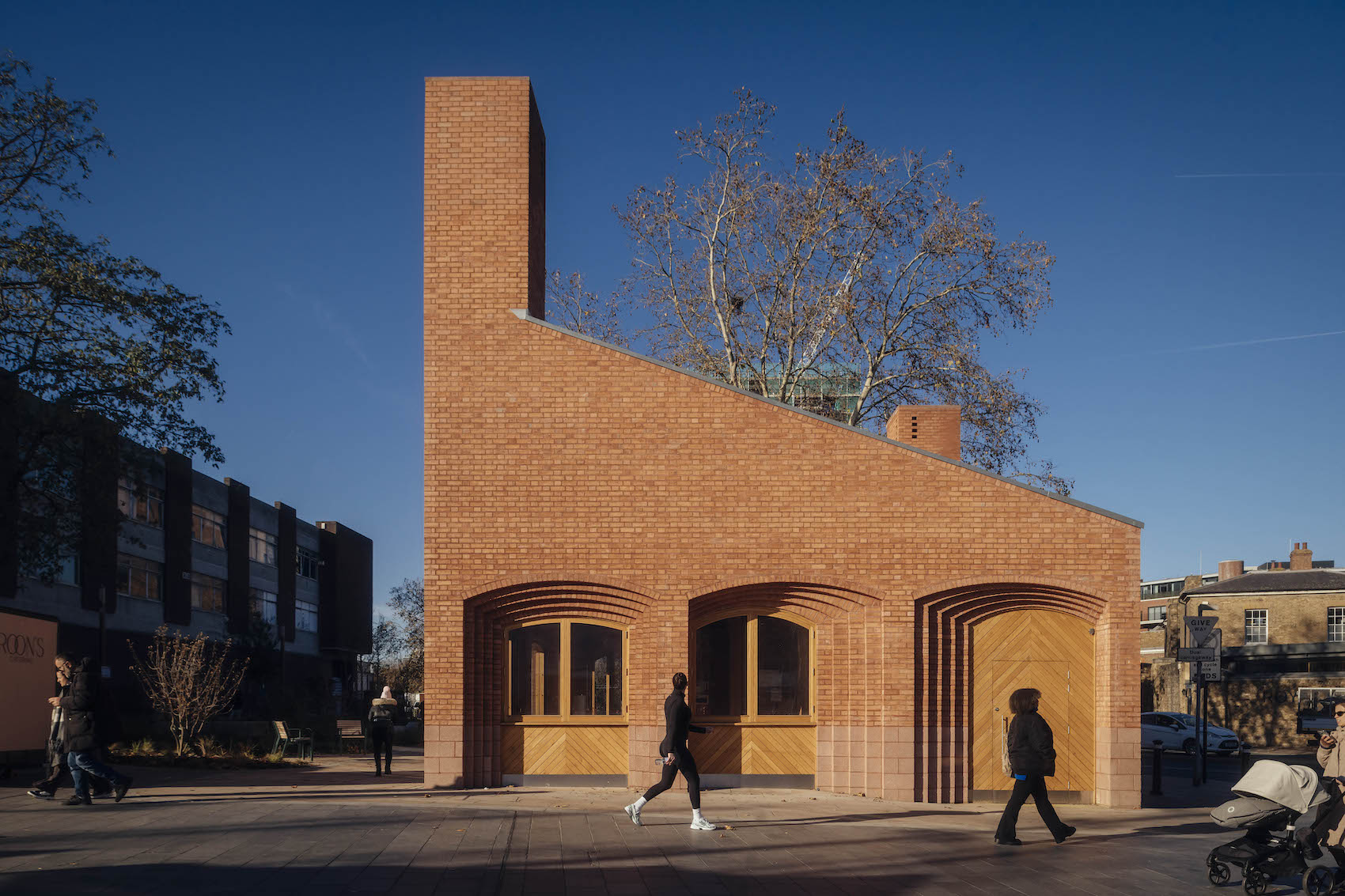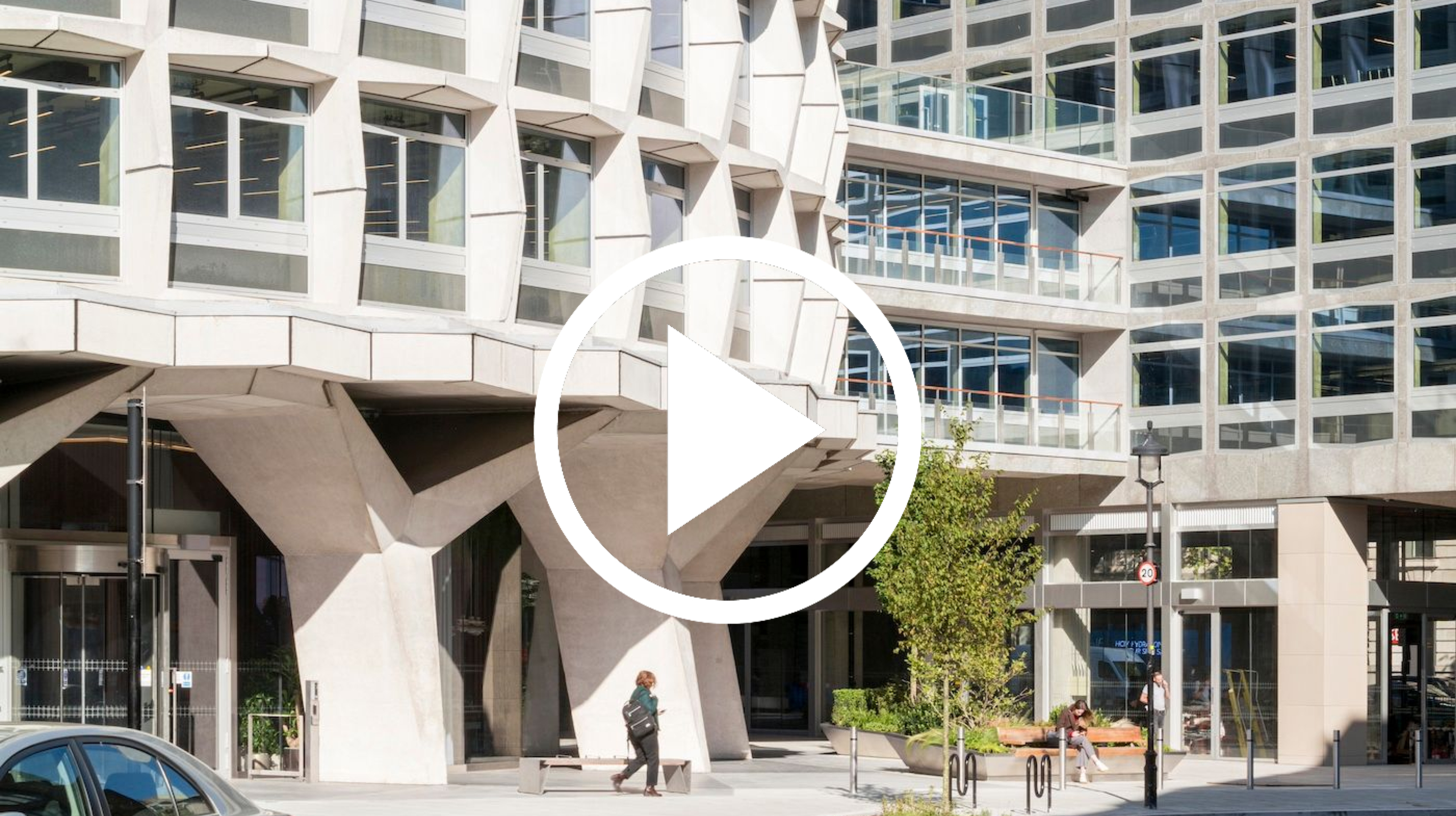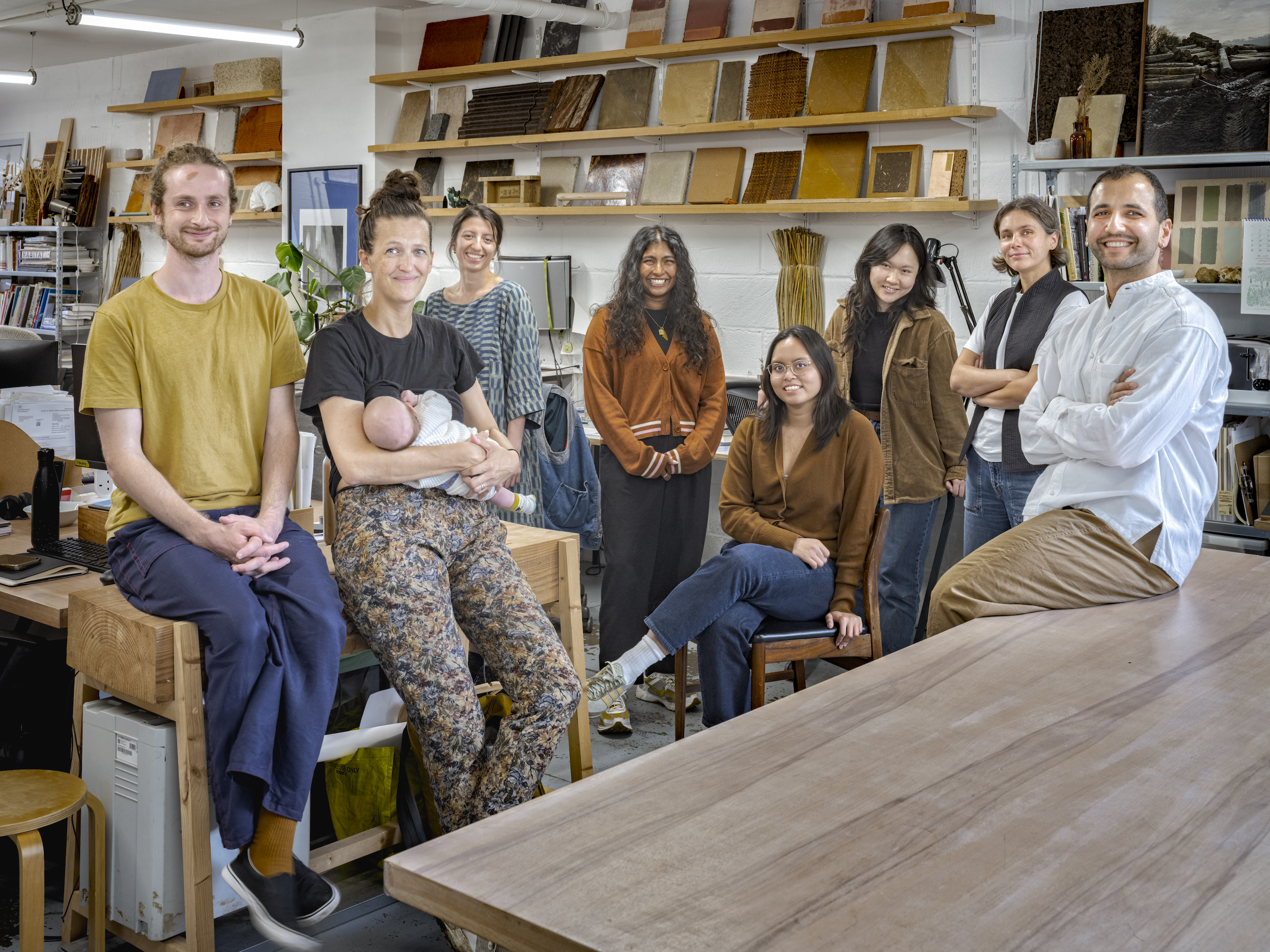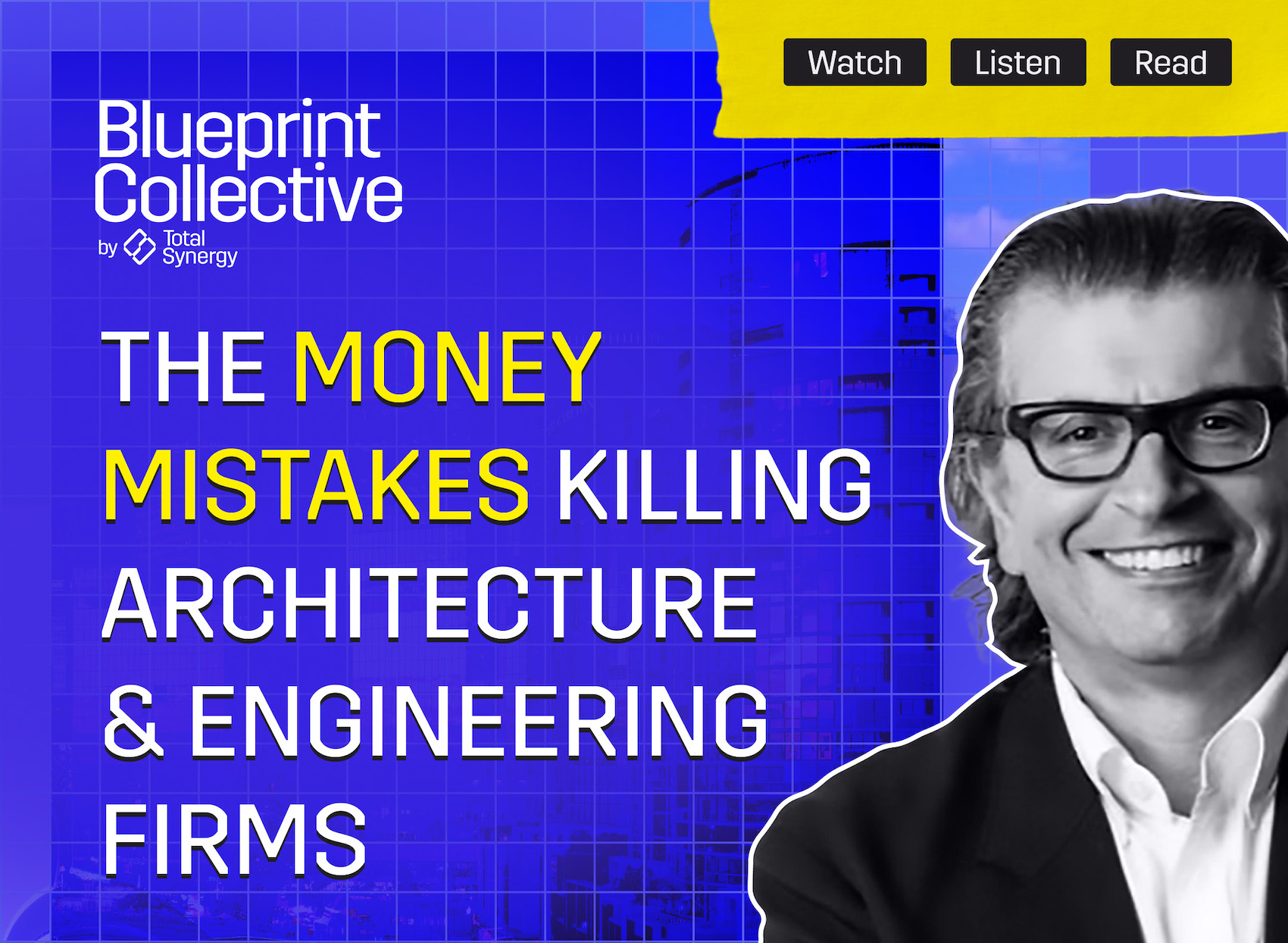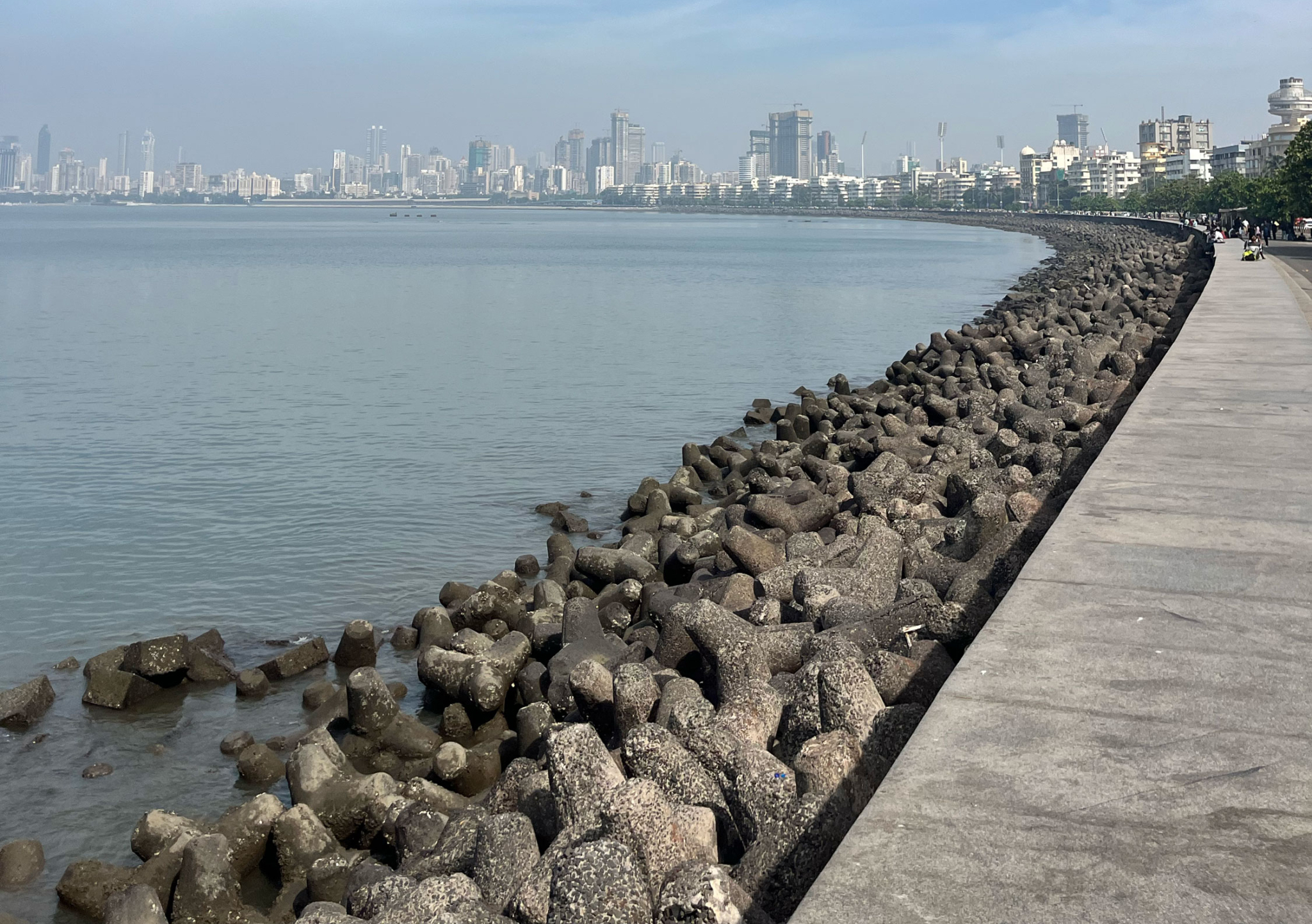Rupert Cook and Socrates Miltiadou co-lead London practice Miltiadou Cook Mitzman Architects. They talk to AT about their beginnings in construction and stonemasonry and how they translate this experience into regenerative practice.
Rupert Cook and Socrates Miltiadou of Miltiadou Cook Mitzman photographed outside a garden pavilion in Putney, London. “We built it to Passivhaus standards and didn’t tell the client. It felt right to quietly make something that performed far beyond expectations. Not as a badge of honour, but because it should be normal. It’s what we’d want for ourselves, so we did it for them. The charred timber lets the building become background and the planting take centre stage.”
If you understand how something is made, you’ll design it better. Rupert started as a builder. Socrates worked at a stonemasonry. We tell our team to speak to the tradespeople, ask how they do things and what gets in the way. It shapes our approach to materials, not just in terms of aesthetics, but in terms of waste, effort, and respect. If you can’t get the beam through the door, it doesn’t matter how good the drawing is.
We choose self-coloured materials because they age well. Polished concrete, burnt timber, natural insulation, lime renders. They don’t need covering up. They change with time, they develop patina. We went back to Hopkins’ Glyndebourne building 30 years on and it looked better than when it was new. The honeyed colour, the wear on the timber — that’s what we’re after.
Regenerative practice means starting with what’s there. We spend a lot of time convincing clients not to demolish, and persuading them that character, structure and embodied carbon are worth preserving.
If we do our job well, no one should notice. You should walk into a building and not notice it’s changed. It should feel inevitable. That kind of subtlety takes care and listening to what the building wants; what the materials suggest, and what the client really means, even if they don’t say it outright.
Regenerative thinking means designing for evolution. We try to make architecture that’s adaptable — that allows for future uses without needing to be ripped apart. Materials should wear in, not wear out, and flexibility isn’t a compromise: it’s a kind of generosity.
We’re not trying to be clever, we’re trying to be clear. People mistake simplicity for naivety. We spend a huge amount of time making things legible – to the user, to the builder, to ourselves. We talk about ‘designing for success’. That means choosing materials that go together naturally, thinking about thermal performance from the start, avoiding over-complication. If something’s easy to build and easy to live with, it will last.
You don’t need to be academic to do the right thing. Solving the environmental crisis doesn’t require endless jargon. It’s about care, and pragmatism. Understanding where materials come from. Knowing what it takes to put them together. Trusting your judgement and your values. That’s how we try to practice. We’re still learning, still adapting but we’re always moving forward.
Rupert Cook and Socrates Miltiadou
Militiadou Cook Mitzman
WC1N 3QA
Reinventing practice features participants in the Regenerative Architecture Index.


